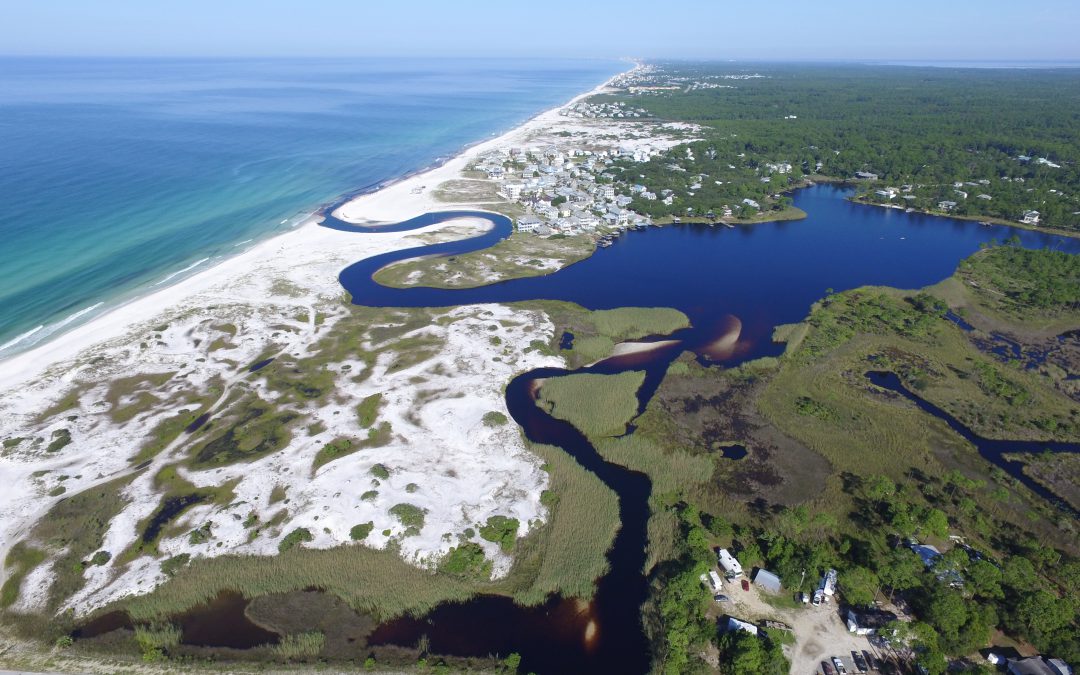
by Sheila Dunning | Sep 29, 2022
October has been designated as Coastal Dune Lake Appreciation month by Walton County government. Walton County is home to 15 named coastal dune lakes along 26 miles of coastline. These lakes are a unique geographical feature and are only found in a few places in the world including Madagascar, Australia, New Zealand, Oregon, and here in Walton County.
A coastal dune lake is defined as a shallow, irregularly shaped or elliptic depressions occurring in coastal communities that share an intermittent connection with the Gulf of Mexico through which freshwater and saltwater is exchanged. They are generally permanent water bodies, although water levels may fluctuate substantially. Typically identified as lentic water bodies without significant surface inflows or outflows, the water in a dune lake is largely derived from lateral ground water seepage through the surrounding well-drained coastal sands. Storms occasionally provide large inputs of salt water and salinities vary dramatically over the long term.
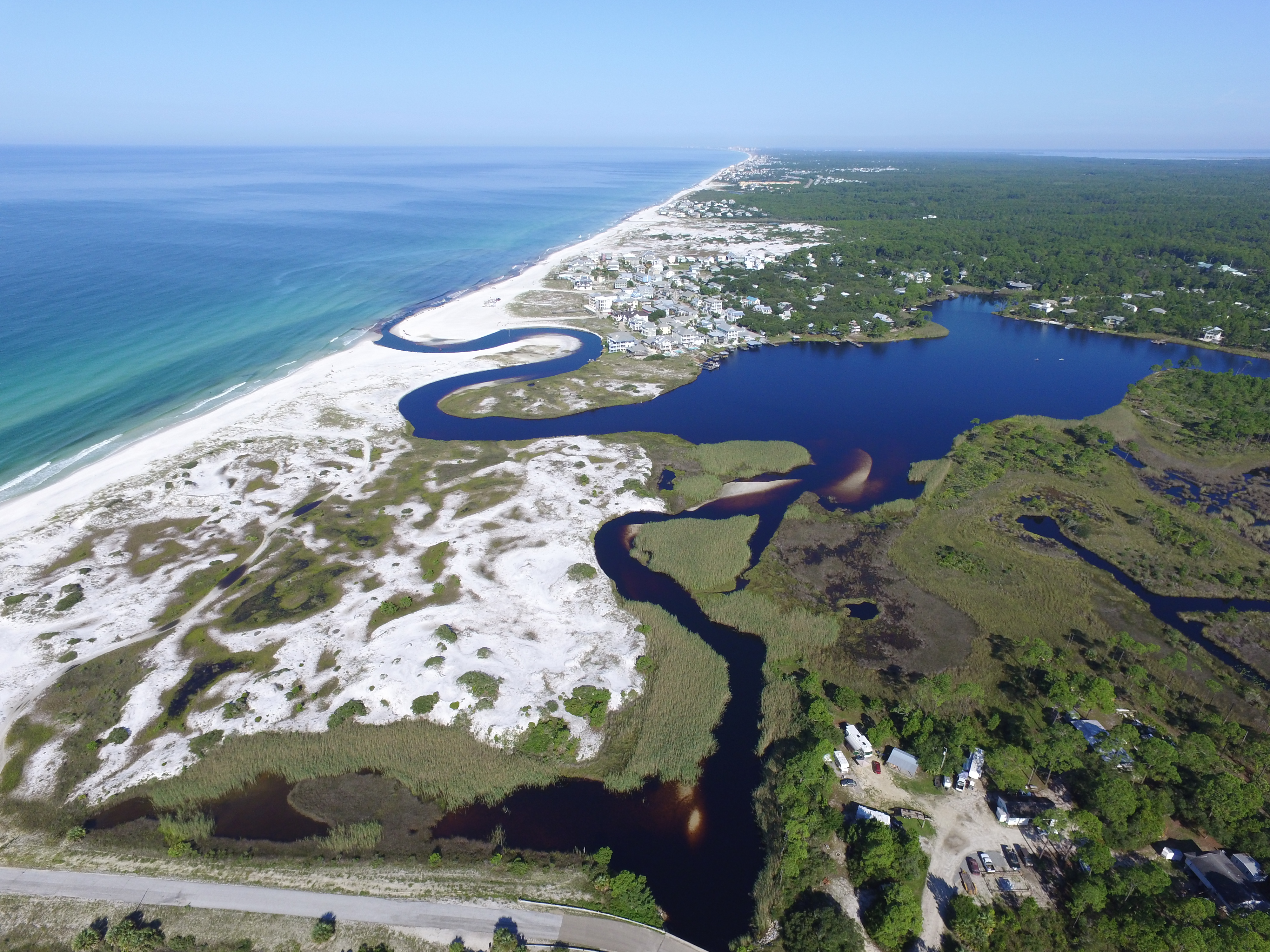 Our coastal dune lakes are even more unique because they share an intermittent connection with the Gulf of Mexico, referred to as an “outfall”, which aides in natural flood control allowing the lake water to pour into the Gulf as needed. The lake water is fed by streams, groundwater seepage, rain, and storm surge. Each individual lake’s outfall and chemistry is different. Water conditions between lakes can vary greatly, from completely fresh to significantly saline.
Our coastal dune lakes are even more unique because they share an intermittent connection with the Gulf of Mexico, referred to as an “outfall”, which aides in natural flood control allowing the lake water to pour into the Gulf as needed. The lake water is fed by streams, groundwater seepage, rain, and storm surge. Each individual lake’s outfall and chemistry is different. Water conditions between lakes can vary greatly, from completely fresh to significantly saline.
A variety of different plant and animal species can be found among the lakes. Both freshwater and saltwater species can exist in this unique habitat. Some of the plant species include: rushes (Juncus spp.), sedges (Cyperus spp.), marshpennywort (Hydrocotyle umbellata), cattails (Typha spp.), sawgrass (Cladium jamaicense), waterlilies (Nymphaea spp.), watershield (Brasenia schreberi), royal fern (Osmunda regalis var. spectabilis), rosy camphorweed (Pluchea spp.), marshelder (Iva frutescens), groundsel tree (Baccharis halimifolia), and black willow (Salix nigra).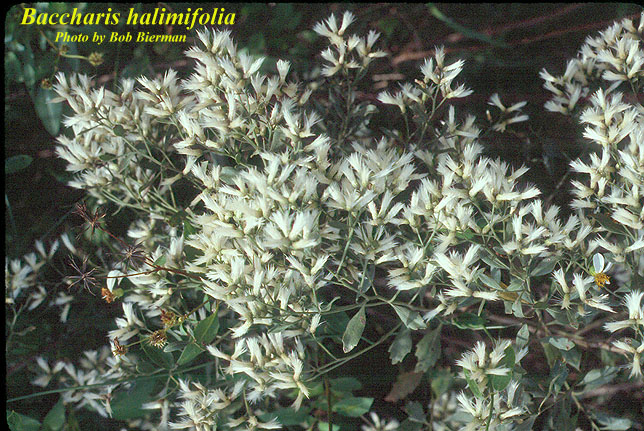
Some of the animal species that can be found include: western mosquitofish (Gambusia affinis), sailfin molly (Poecilia latipinna), American alligator (Alligator mississippiensis), eastern mud turtle (Kinosternon subrubrum), saltmarsh snake (Nerodia clarkii ssp.), little blue heron (Egretta caerulea), American coot (Fulica americana), and North American river otter (Lutra canadensis). Many marine species co-exist with freshwater species due to the change in salinity within the column of water.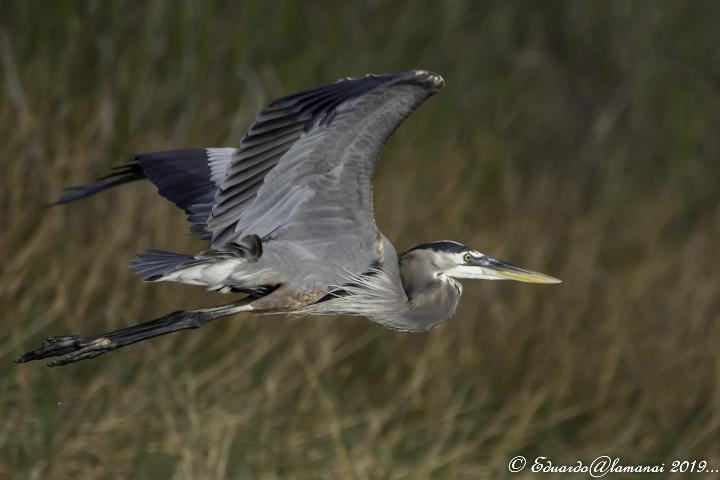
The University of Florida/IFAS Extension faculty are reintroducing their acclaimed “Panhandle Outdoors LIVE!” series. Come celebrate Coastal Dune Lake Appreciation month as our team provides a guided walking tour of the nature trail surrounding Western Lake in Grayton Beach State Park. Join local County Extension Agents to learn more about our globally rare coastal dune lakes, their history, surrounding ecosystems, and local protections. Walk the nature trail through coastal habitats including maritime hammocks, coastal scrub, salt marsh wetlands, and coastal forest. A tour is available October 19th.
The tour is $10.00 (plus tax) and you can register on Eventbrite (see link below). Admission into the park is an additional $5.00 per vehicle, so carpooling is encouraged. We will meet at the beach pavilion (restroom facilities available) at 8:45 am with a lecture and tour start time of 9:00 am sharp. The nature trail is approximately one mile long, through some sandy dunes (can be challenging to walk in), on hard-packed trails, and sometimes soggy forests. Wear appropriate footwear and bring water. Hat, sunscreen, camera, binoculars are optional. Tour is approximately 2 hours. Tour may be cancelled in the event of bad weather.
Register here on Eventbrite: https://www.eventbrite.com/e/panhandle-outdoor-live-coastal-dune-lake-lecture-and-nature-trail-tour-tickets-419061633627
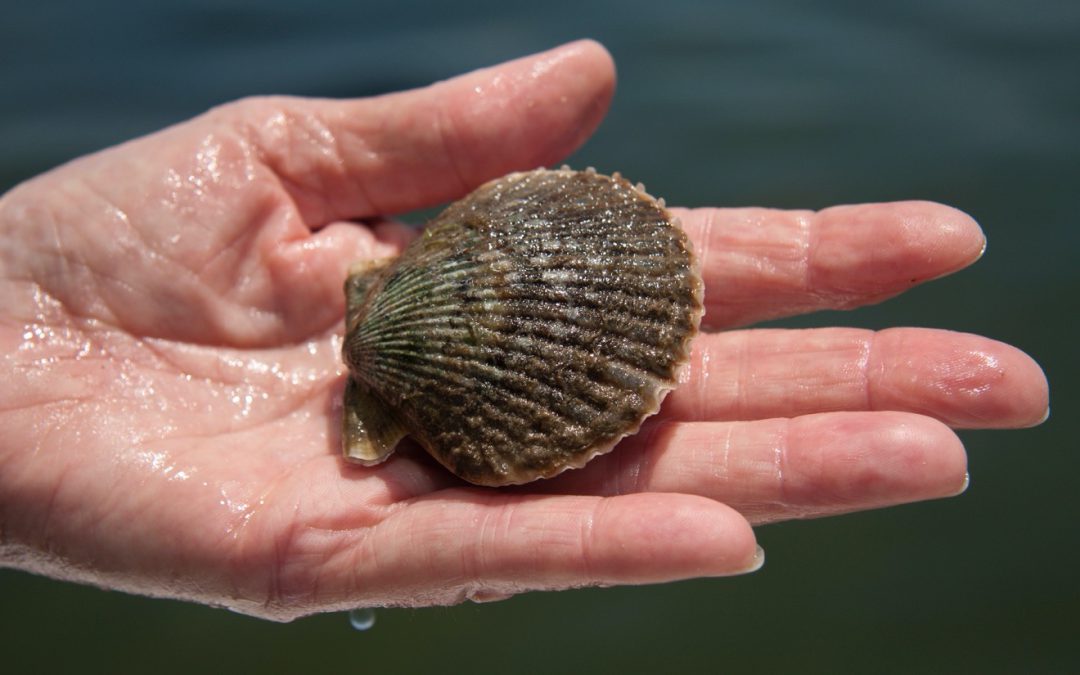
by Rick O'Connor | Jul 14, 2022
Scallops…
We used to find them here. I have heard stories of folks who could fill a 5-gallon bucket with them in about 30 minutes right by Morgan Park. An old shrimper told me that back in the day when shrimping in Santa Rosa Sound they often found scallops along the points. They would drop a grab and collect them for sale. This was when both commercial scallop harvest, and shrimping, were allowed in Santa Rosa Sound. Neither are today. There are numerous tales of large beds of scallops in Big Lagoon and scientific reports of their presence in both locations and in Little Sabine. I myself have found them at Naval Live Oaks, Shoreline Park, Big Sabine, and in Big Lagoon.
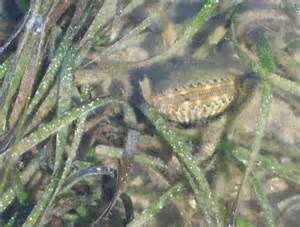
Bay scallops need turtle grass to survive.
Photo: UF IFAS
But that was a long time ago. The reports suggest the decline began in the 1960s and today it is rare to find one. What happen is hard to say but most believe it began with a decline in water quality. A decrease in salinity and an increase in nutrients from stormwater runoff degraded the environment for both the scallops and the turtle seagrass they depend on. Overharvesting certainly played a role.
But they are not all gone. There is still turtle grass in our system and occasionally reports of scallops. They are trying to hang on. There have also been attempts to improve water quality by modifying how stormwater is discharged into our bay, though there is much more to do there. Each year Florida Sea Grant Agents at our local county extension offices provide volunteers an opportunity to survey our bay for both species. We have a program called “Eyes on Seagrass” where volunteers monitor sites with seagrass once a month from April through October. We partner with Dr. Jane Caffrey from the University of West Florida to assess this. We also hold our annual “Pensacola Bay Scallop Search” each July.
In the Scallop Search volunteers will snorkel four different 50-meter transects lines either in Santa Rosa Sound or Big Lagoon searching for scallops. These surveys are conducted at the end of July. There are 11 survey grids in Big Lagoon and 55 in Santa Rosa Sound extending from Gulf Breeze to Navarre. To volunteer you will need a team of at least three people and your own snorkel gear. Some locations do require a boat to access. If you are interested in searching along the north shore of Santa Rosa Sound contact Chris Verlinde at chrismv@ufl.edu (850-623-3868). If you are interested in searching along the south shore of Santa Rosa Sound, or Big Lagoon, contact Rick O’Connor at roc1@ufl.edu (850-475-5230).
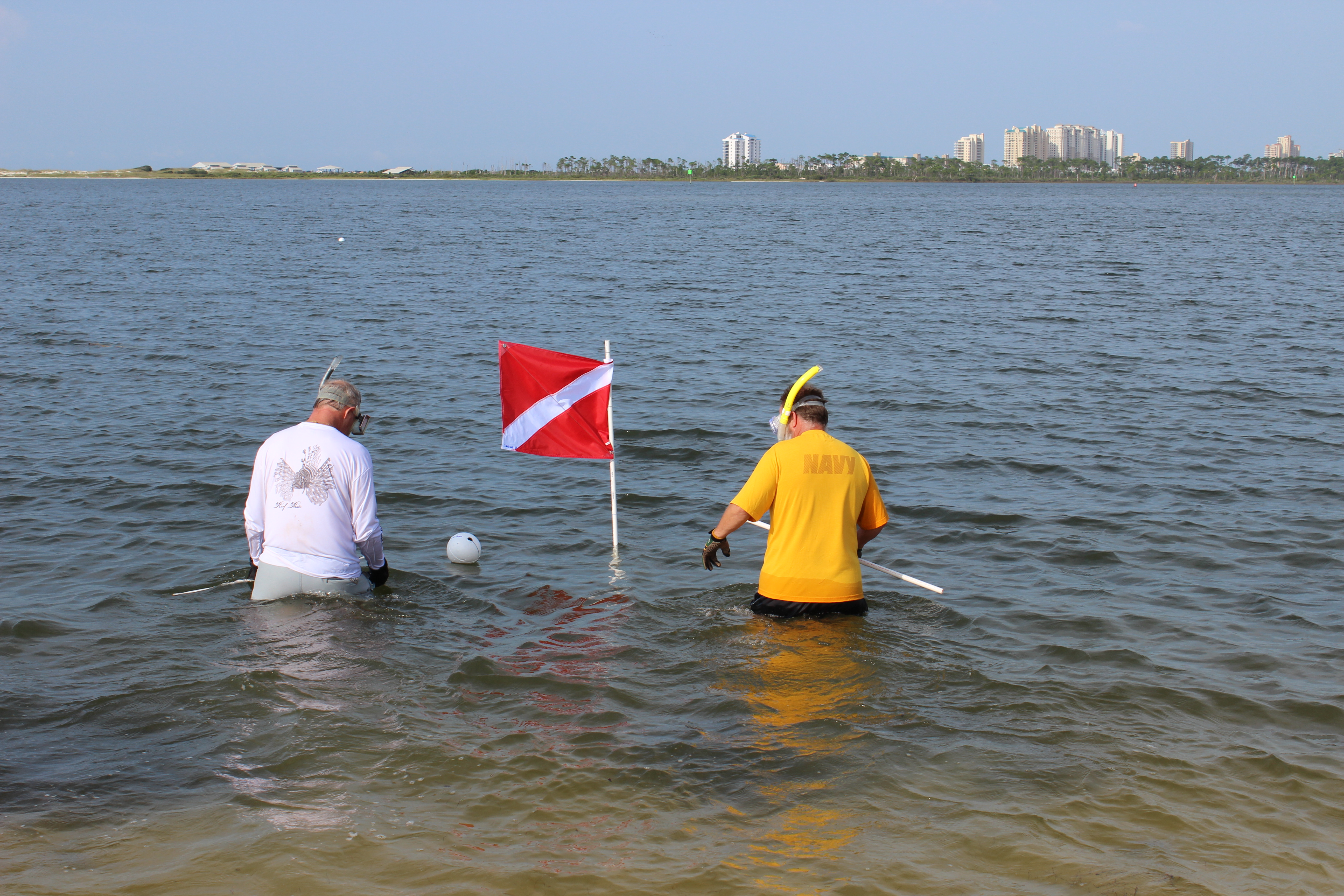
Volunteers conducting the great scallop search.
Photo: Molly O’Connor
Reminder, harvesting scallops in Escambia and Santa Rosa counties is still illegal. Please give them a chance to recover.
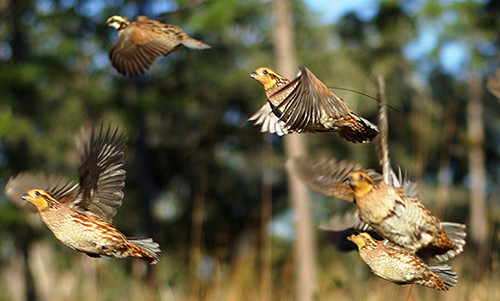
by Rick O'Connor | Dec 13, 2019
‘Bobwhites in Pine Savanna’ Workshop Set
For Jan. 30 in Marianna, Florida
The National Bobwhite Conservation Initiative (NBCI) and partners will host the Tri-State Bobwhite Symposium for professional land managers and landowners Thursday, January 30, 2020, in Marianna, FL.
It is the second Working Lands for Wildlife–Bobwhites in Pine Savanna workshop funded by the Natural Resources Conservation Service and is expected to draw attendees from three states. The program goal is to restore pine savanna on 82,000 acres across seven states using thinning, prescribed fire, and native grass restoration. Federal funding is available to landowners who choose to pursue pine savanna management on that designated landscape.
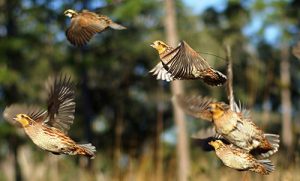
Bobwhite quail are popular with many hunters and management is trying to restore them.
Photo: USDA
“Private lands are a critical and necessary component for landscape-scale restoration of wild bobwhites, which is what NBCI is all about,” said NBCI Forestry Coordinator Steve Chapman. “Active management of pine forests on those lands, while still meeting landowner objectives, is a key NBCI strategy, and 82,000 managed acres will show the dividends of this approach.”
Dr. Jess McGuire, Quail Forever’s Working Lands for Wildlife bobwhite coordinator, added that “in order to achieve this level of restoration, wildlife professionals must be trained in the nuances of bobwhite management.”
The workshop will be from 9am–2pm at the University of Florida, Institute of Food and Agricultural Sciences (UF/IFAS) office, located at 2741 Penn Avenue, Suite 3, Marianna, FL 32448. Preregistration by January 23 is required by contacting jmcguire@quailforever.org or online at http://bit.ly/tristatequail.
Additional partners include Quail Forever, Florida Fish and Wildlife Conservation Commission, Tall Timbers Research Station and Land Conservancy, University of Florida Extension, and the Natural Resources Conservation Service.
Through multiple agreements, NBCI, in collaboration with Quail Forever and Warnell School of Forestry and Natural Resources/University of Georgia, will provide at least one of these workshops in each of the seven states identified in the project geography. Those states include Alabama, Florida, Georgia, New Jersey, North Carolina, South Carolina, and Virginia. Partners will also produce educational materials detailing management techniques and the results of intentional, targeted pine savanna management for bobwhites as part of the overall project.
About NBCI
Headquartered at the University of Tennessee’s Institute of Agriculture/Department of Forestry, Wildlife and Fisheries, NBCI is a science and habitat-based initiative of the National Bobwhite Technical Committee (NBTC) to elevate bobwhite quail recovery from an individual state-by-state proposition to a coordinated, range-wide leadership endeavor to restore wild bobwhites on a landscape scale. The committee is comprised of representatives of 25 state wildlife agencies, various academic research institutions and private conservation organizations. Support for NBCI is provided by the Federal Aid in Wildlife Restoration Program, state wildlife agencies, the Joe Crafton Family Endowment for Quail Initiatives, the University of Tennessee, Park Cities Quail and Roundstone Native Seed.
Contact:
John Doty
Communications Director
(865) 974-7281

by Sheila Dunning | Jan 19, 2018
 The Florida Master Naturalist Program is an adult education University of Florida/IFAS Extension program. Training will benefit persons interested in learning more about Florida’s environment or wishing to increase their knowledge for use in education programs as volunteers, employees, ecotourism guides, and others.
The Florida Master Naturalist Program is an adult education University of Florida/IFAS Extension program. Training will benefit persons interested in learning more about Florida’s environment or wishing to increase their knowledge for use in education programs as volunteers, employees, ecotourism guides, and others.
Through classroom, field trip, and practical experience, each module provides instruction on the general ecology, habitats, vegetation types, wildlife, and conservation issues of Coastal, Freshwater and Upland systems. Additional special topics focus on Conservation Science, Environmental Interpretation, Habitat Evaluation, Wildlife Monitoring and Coastal Restoration. For more information go to: http://www.masternaturalist.ifas.ufl.edu/ Okaloosa and Walton Counties will be offering Upland Systems on Thursdays from February 15- March 22. Topics discussed include Hardwood Forests, Pinelands, Scrub, Dry Prairie, Rangelands and Urban Green Spaces. The program also addresses society’s role in uplands, develops naturalist interpretation skills, and discusses environmental ethics. Check the website for a Course Offering near you :http://conference.ifas.ufl.edu/fmnp/
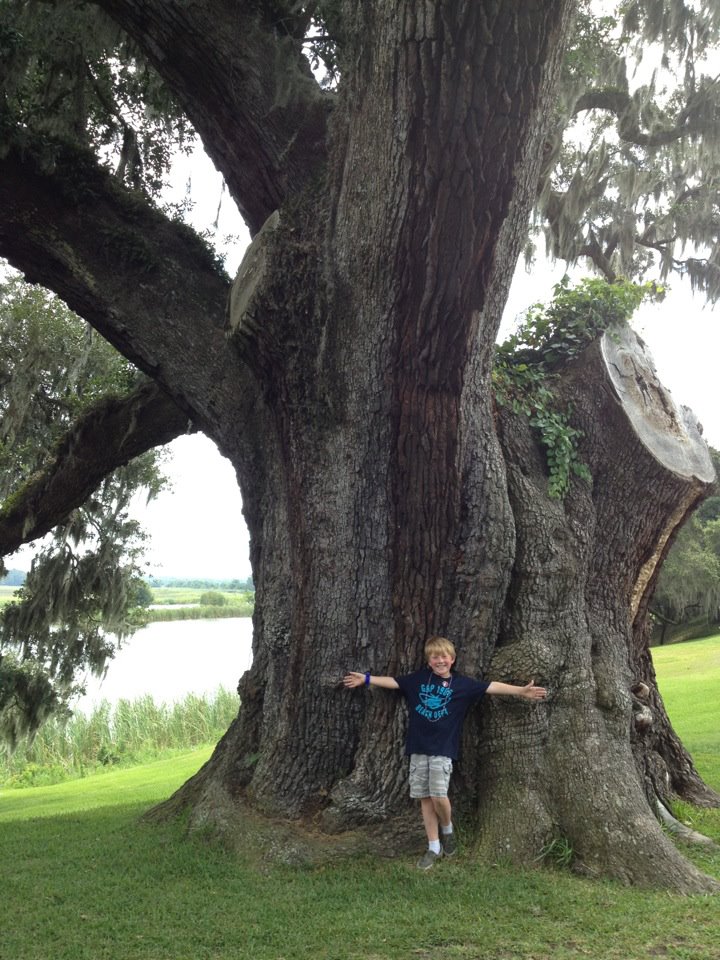
by Carrie Stevenson | Jan 5, 2018
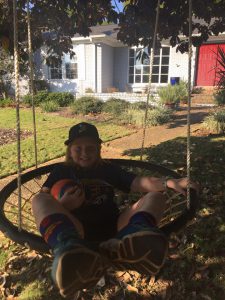
The swing hanging from our magnolia tree has provided many happy memories for our family. Photo credit: Carrie Stevenson
Do you have a favorite tree? Often, the trees in our lives tell a story.
One of the selling points when we bought our house 14 years ago was the tall, healthy Southern magnolia in the front yard. It was beautiful, and I could see it out my front window. A perfect shade tree, I could envision a swing hanging from its branches one day. Within six months of moving into the house, Hurricane Ivan struck. A neighbor’s tree fell and sheared off a quarter of the branches from our beloved magnolia. We were lucky to have minimal damage otherwise, and hoped the tree would survive.
The branches and leaves eventually filled in, and we added that swing I had imagined. One day I was pushing my daughter in the swing, when a car slowed on our street and stopped at our mailbox. A man stepped out and asked, “Are you enjoying that tree?” I responded that we very much were, and with a smile, he explained that his family built our house and that he planted that very magnolia tree 40 years before, when his son was born. He was so happy to see us enjoying the tree that he could not help but stop.
I was so grateful to hear that story and know that our family’s favorite tree held such special meaning. Our enjoyment existed because of the joyous celebration of a new birth. That is why we plant trees. For the benefit of those yet unborn, to commemorate special moments, and to provide the very oxygen we breathe. As the Greek proverb goes, “Society grows great when old men plant trees whose shade they know they shall never sit in.”
January 19 is Florida’s Arbor Day, a time to celebrate the many benefits of trees, and the day is often celebrated by planting new trees. Winter is the best time of year to plant trees, as they are able to establish roots without competing with the energy needs of new branches and leaves that come along in springtime.
“The best time to plant a tree is twenty years ago. The second best time is now.” –Anonymous
Check with your local Extension offices, garden clubs, and municipalities to find out if there is an Arbor Day event near you! Several local agencies have joined forces to organize tree giveaway events in observance of Florida’s Arbor Day.
Escambia County:
Thursday, January 18:
Deadline for UF IFAS Extension/Escambia County’s second annual Arbor Day Mail Art Contest. To participate, mail a drawing, painting, or mixed media artwork with the theme, “Strong Trees, Strong Communities” to Arbor Day Art Contest c/o Escambia County Extension, 3740 Stefani Road, Cantonment, FL 32533. Please include your name, age, and contact information on the back of your artwork. Contest entries must arrive by mail or be dropped off by Jan. 18 and will be judged at the tree giveaway on Jan. 20 at Barrineau Park Community Center.
First place winners of the art contest will receive prizes including a seven-gallon tree, a shovel, and a tree book. Second place winners will receive a tree book and third place winners will receive gardening gloves. Categories include children (12-under), teen (13-18), and adult (over 18). All participants in attendance at the tree giveaway will receive a special edition Arbor Day water bottle featuring last year’s winning design.
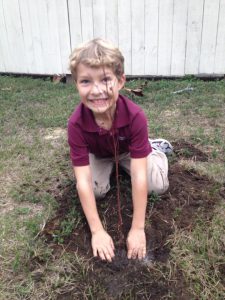
Many communities plant trees to celebrate Arbor Day. Photo credit: Carrie Stevenson
Saturday, January 20th
Escambia County will hold their tree giveaway and public planting from 10 a.m. to noon Saturday, Jan. 20 at Barrineau Park Community Center, located at 6055 Barrineau Park Road, Molino. Support for the event is provided by the Florida Forest Service, Resource Management Services, and Escambia County UF-IFAS Extension. Each attendee will receive two free native 1-gallon trees. Species available include tulip poplar, Chickasaw plum, Shumard oak, and fringetree.
For more information about either Escambia event, contact Carrie Stevenson, Coastal Sustainability Agent III, UF IFAS Extension, at 850-475-5230 or ctsteven@ufl.edu.
Santa Rosa County:
Friday, January 19
10 am—Navarre Garden Club Arbor Day celebration. Foresters will give away 1-gallon containerized trees and conduct a have tree planting demo. 7254 Navarre Parkway, Navarre, 32566. For more information, contact Mary Salinas, 850-623-3868 or maryd@santarosa.fl.gov
Saturday, January 20th
10 am—Milton Garden Club Arbor Day celebration. Foresters will give away 1-gallon containerized trees and conduct a have tree planting demo. 5256 Alabama Street, Milton. For more information, contact Mary Salinas, 850-623-3868 or maryd@santarosa.fl.gov
Leon County:
Saturday, January 20th
9am to 12pm – City of Tallahassee/Leon County Arbor Day Celebration – Join City and County Staff, UF/IFAS Leon County Extension Faculty and Master Gardener volunteers at the Apalachee Regional Park (7550 Apalachee Pkwy) for a tree planting in honor of Arbor Day. Citizens are invited to come help plant hundreds of trees in the park and also learn about the benefits of trees, how to properly plant a tree, and after the planting is done, take a tree identification walk. For more information, contact Mindy Mohrman, City/County Urban Forester at 850.891.6415 or melinda.mohrman@talgov.com
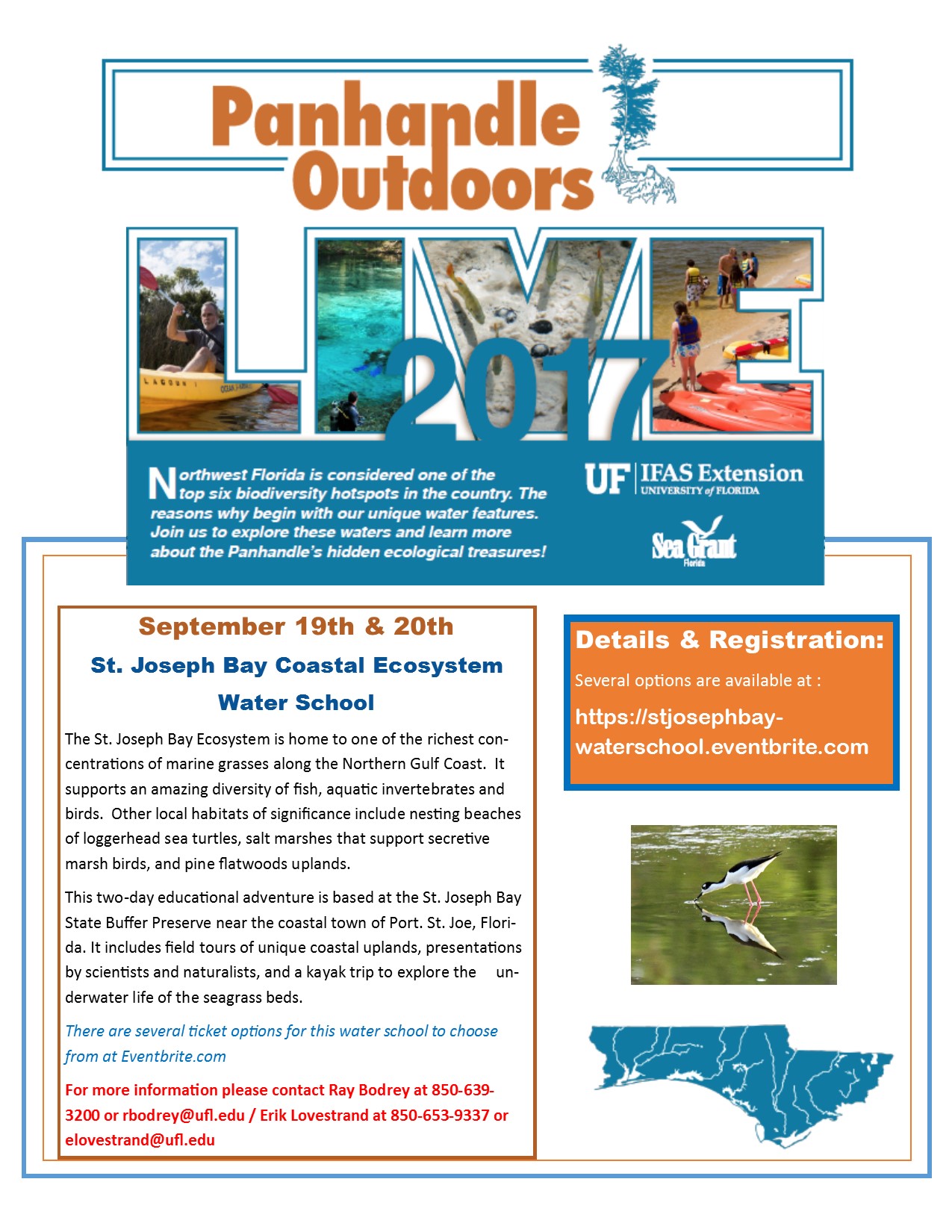
by Rick O'Connor | Aug 11, 2017
Our first POL program will happen this week – August 17 – at the Navarre Beach snorkel reef, and is sold out! We are glad you all are interested in these programs.
Well! We have another one for you. The Natural Resource Extension Agents from UF IFAS Extension will be holding a two-day water school at St. Joseph Bay. Participants will learn all about the coastal ecosystems surrounding St. Joe Bay in the classroom, snorkeling, and kayaking. Kayaks and overnight accommodations are available for those interested. This water school will be September 19-20. For more information contact Extension Agent Ray Bodrey in Gulf County or Erik Lovestrand in Franklin. Information and registration can be found at https://stjosephbay-waterschool.eventbrite.com.


 Our coastal dune lakes are even more unique because they share an intermittent connection with the Gulf of Mexico, referred to as an “outfall”, which aides in natural flood control allowing the lake water to pour into the Gulf as needed. The lake water is fed by streams, groundwater seepage, rain, and storm surge. Each individual lake’s outfall and chemistry is different. Water conditions between lakes can vary greatly, from completely fresh to significantly saline.
Our coastal dune lakes are even more unique because they share an intermittent connection with the Gulf of Mexico, referred to as an “outfall”, which aides in natural flood control allowing the lake water to pour into the Gulf as needed. The lake water is fed by streams, groundwater seepage, rain, and storm surge. Each individual lake’s outfall and chemistry is different. Water conditions between lakes can vary greatly, from completely fresh to significantly saline.











